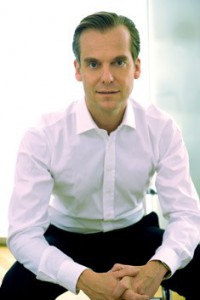A German Expert’s Take on the Growth in Anti-Aging Products
If you’ve never heard of dermatologist Dr. Timm Golueke, it’s probably because you’re not a Euro-based jet setter old enough to worry about aging. Even people outside of the so-called “1%” may have heard of his product line, Royal Fern, a set of phytoactive creams, serums and other items formulated with natural ingredients such as the seed oil of the African Voacanga tree, among others. His clinic in Munich is a chic destination for anti-aging pilgrimages in search of the newest balm of youth, and W Magazine recently gave him some serious ink on the subject of why Germany has become an “anti-aging mecca.”
His take? That Germany has a longstanding tradition of healthcare, spa care and skin care, and it’s only lately that the rest of the world sat us and began to take notice.
We have a famous little town called Baden-Baden, where all those people from Russia over the turn of the last century came, to do what we call today ‘wellness.’ So, there is a tradition in Germany for healthy living, skincare and natural remedies, but it was a little bit sleeping the last 50 years but now it’s coming up again.
What’s driving that newfound interest? Much the same impulse that’s moving the needle for botanicals, nutricosmetics and nature-based products in general. “More and more, people want to know about what they are eating and they similarly like to know more about their skincare and what’s going into it. They care that it’s trustful, the ingredients are proven, and they also trust German science.”
Nature and science are coming together with increasing frequency in terms of new skincare products, but Dr. Golueke says consumers need to take note of the quality of what’s hitting the store shelves: “You can buy things like Vitamin C and put it on your skin, but what’s more important is how do you get the right ingredients into your skin at the right points. This science is very important and why it takes so long and the development of products is very expensive.”
Moving toward more common anti-aging solutions
In his recent experience, the world market for skincare is shrinking even as it’s expanding: “More and more, it’s one world right now.” Countries are increasingly using common products, treatment tools and other regimens, though there are always regulatory barriers to deal with.
But many of the ingredients and formulations don’t vary as much between countries as they once did. “Here in Germany we have more fillers than in the U.S. because it takes a long time to get the fillers approved by the Food and Drug Administration, but it’s mainly about different types of hyaluronic acids. It’s not like we have different types of filler as in the material itself, it’s more like different hyaluronic acids for different parts of the face.”
Our reaction? That Dr. Golueke is (obviously) someone who speaks to a rarified segment of consumers; his treatments and products that only trickle down to the mass market over time, but his view of a smaller, more cross-wired global marketplace may be right on the money.

